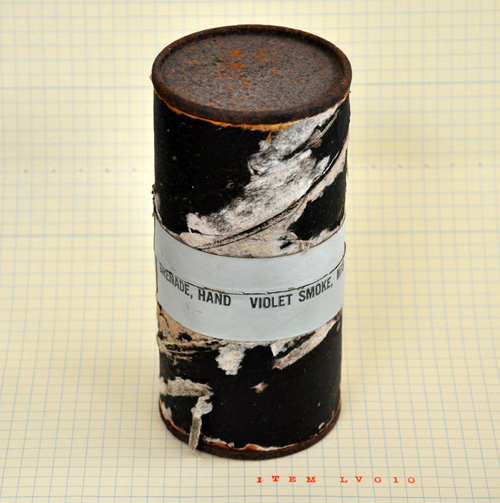This week I'm cataloging three more discards that I retrieved from Antarctica to include in my artwork. All three items are of a military nature, which may seem odd in light of the Antarctic Treaty's banning of military activity on land or ice shelves below 60°S. But while the Treaty prohibits military bases, maneuvers, and weapons-testing on the continent, it does permit the use of military personnel and equipment for scientific research and other peaceful purposes. It's an essential arrangement for the National Science Foundation which relies greatly on the military's ability to provide logistical support in extremely harsh environments. I first clued into this in Christchurch where the New York Air National Guard's 109th Airlift Wing is tasked with flying to Antarctica under tricky and unpredictable conditions. (And recently, earthquakes. Word is that the Christchurch-based airmen are all safe.) Over at McMurdo Station, the U.S. military coordinates strategic and tactical airlift, emergency response, aeromedical evacuation, deep-field support, sealift duties, and the handling of seaport access, bulk fuel supply, port cargo and a host of other trans-portation needs. This ongoing support mission, called Operation Deep Freeze, began as a Navy-led undertaking in the mid-1950s which eventually aligned with scientific objectives intro- duced under the Antarctic Treaty. Today ODF is carried out through the Joint Task Force – Support Forces Antarctica by the 13th Air Force and the U.S. Pacific Command. Military personnel currently comprise about 10 percent of the 1,200 people working out of McMurdo Station.  The cylindrical paperboard container above was found in the Dry Valleys by Marble Point camp manager Randall "Crunch" Noring. The container was empty but its label tells us that it once held an M18 colored smoke grenade. Oddly enough, I acquired just such a grenade elsewhere in the Dry Valleys to create a snug match. I'll post the second half of the happy union tomorrow along with thoughts on what it might have been used for.
The cylindrical paperboard container above was found in the Dry Valleys by Marble Point camp manager Randall "Crunch" Noring. The container was empty but its label tells us that it once held an M18 colored smoke grenade. Oddly enough, I acquired just such a grenade elsewhere in the Dry Valleys to create a snug match. I'll post the second half of the happy union tomorrow along with thoughts on what it might have been used for.